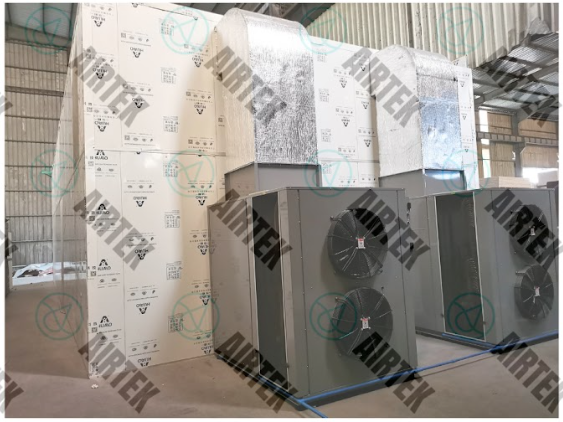The timber industry has witnessed remarkable changes in recent years, particularly in drying technology. Modern wood dryer systems have transformed how businesses process lumber, offering unprecedented control over moisture content and quality. These advancements mean wood processors no longer need to choose between speed and quality – today’s wood dryer technology delivers both while significantly reducing energy consumption, a critical factor for businesses facing rising operational costs and environmental pressures.
Energy consumption remains one of the biggest challenges in timber processing. Traditional kilns often waste heat and require constant monitoring, driving up costs and carbon footprints. Modern wood dryer systems address these issues through precise temperature regulation and airflow management. Companies upgrading to these systems typically report energy savings between 25-40% compared to conventional methods. This reduction translates to substantial cost savings, especially for operations processing large timber volumes year-round.
Smart Controls Revolutionise Drying Processes
The integration of smart controls stands out as perhaps the most significant advancement in drying technology. Unlike older systems that relied on basic timers and thermostats, today’s timber drying equipment features sophisticated sensors that continuously monitor moisture levels throughout the entire batch. This real-time data allows for automatic adjustments to temperature, humidity, and airflow, preventing the common issues of over-drying or uneven moisture content that plague traditional methods.
These intelligent systems learn from each drying cycle, gradually optimising parameters based on specific timber types and dimensions. The result? Consistent quality across batches with minimal operator intervention. A timber yard manager I spoke with mentioned they’ve reduced staff oversight hours by nearly 70% since implementing smart-controlled drying systems, allowing them to reallocate workers to other productive tasks.
Heat Recovery Systems: Nothing Goes to Waste
Perhaps the most impressive feature of modern drying technology comes from heat recovery systems. These ingenious designs capture excess heat that would normally escape through vents or walls and redirect it back into the drying process. Some advanced models recover up to 85% of heat energy that would otherwise be lost, dramatically improving overall efficiency.
This approach represents a fundamental shift in how we think about industrial energy use. Rather than simply consuming and discarding energy, contemporary systems create a semi-closed loop where valuable heat resources are recycled multiple times. For timber processors operating in cold climates, this feature alone can justify the investment in new equipment, as heating costs during winter months often represent their largest operational expense.
Variable Speed Technology Reduces Power Consumption
Older drying systems typically operated at full power regardless of requirements – rather like driving a car with the accelerator pressed to the floor at all times. Modern equipment takes a smarter approach with variable speed technology that adjusts power consumption based on actual drying needs. Fans and heating elements scale back during less intensive phases, ramping up only when necessary.
This dynamic operation slashes power bills while extending equipment lifespan. Components experience less wear when they’re not constantly running at maximum capacity. Many businesses report maintenance costs dropping by 30-50% after switching to variable speed systems. Though the upfront investment might be higher, the combined savings on energy and maintenance typically deliver payback periods under three years.
Remote Monitoring and Predictive Maintenance
The days of physical checks and reactive maintenance belong in the past. Today’s advanced wood dryer systems come equipped with remote monitoring capabilities that transform how businesses manage their drying operations. These systems allow operators to check performance metrics, adjust settings, and receive alerts from anywhere via smartphone apps or web portals. This connectivity proves especially valuable for facilities operating multiple shifts or during weekends.
Beyond mere convenience, these systems employ predictive maintenance algorithms that detect potential problems before they cause breakdowns. By analysing patterns in performance data, the software can identify when components show early signs of wear. A small timber operation in Yorkshire saved nearly £25,000 last year by addressing a developing fan issue before it caused a catastrophic failure that would have halted production for weeks.
Competitive Advantage Through Quality Control
Modern wood dryer technology doesn’t just save energy—it dramatically improves product quality. Traditional kilns often struggle with moisture consistency, leading to warping, checking, and discolouration. These quality issues result in customer complaints, returns, and damaged reputation. The precision control offered by contemporary systems virtually eliminates these problems, ensuring each board meets exact moisture specifications.
This quality improvement translates directly to market advantage. Timber suppliers using advanced drying technology can confidently offer premium-grade products with tighter tolerances and fewer defects. Many report securing contracts with high-end manufacturers who previously imported timber from overseas suppliers. The ability to consistently deliver superior quality opens doors to lucrative market segments that remain closed to processors using outdated equipment.
Conclusion: The Business Case for Upgrading
The evidence makes a compelling case for investing in modern wood drying technology. Between energy savings, quality improvements, reduced labour requirements and maintenance costs, these systems deliver returns far beyond their purchase price. Timber processors still using older equipment face an increasingly difficult competitive position as their operating costs remain high while product quality lags behind. Contact Airtek today to explore how our energy-efficient wood dryer solutions can transform your timber operation while reducing costs and environmental impact. Your competitors are already making the switch – can you afford not to?

